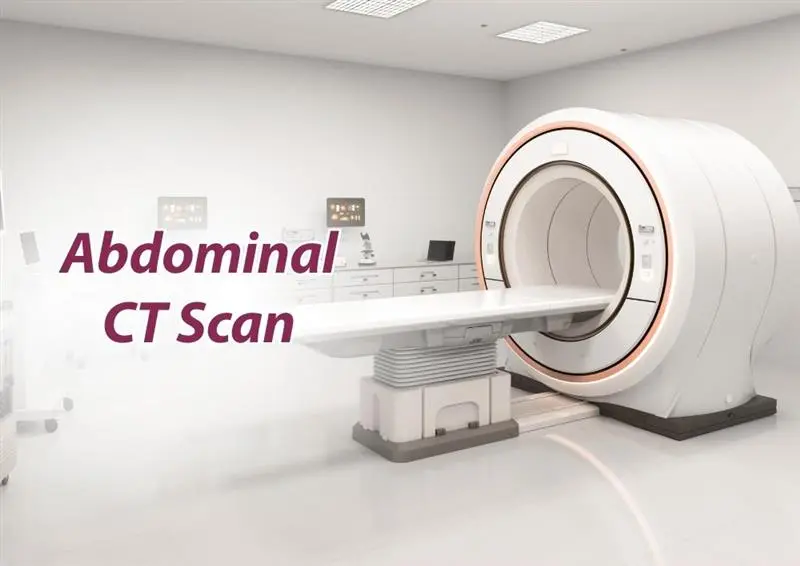What Size of Hernia Needs Surgery?
A hernia is a common medical condition where an internal organ or tissue protrudes through a weak area in the surrounding muscle or tissue. While some hernias may cause little to no discomfort, others can result in serious complications if not treated. One of the most frequently asked questions by patients is, "What size hernia needs surgery?" Although the size of the hernia plays a key role, the decision to proceed with surgery also depends on other important factors, such as the hernia's location, symptoms, and potential risk of complications.
In this blog, we will explore the relationship between hernia size and the need for surgery, discuss different types of hernias, and the general surgery doctor in Gurgaon at Miracles Apollo Cradle/Spectra provides insights into when surgical intervention becomes necessary.
Understanding Hernias: Types and Symptoms
Before we explore the size criteria for hernia surgery, it is important to understand what a hernia is and the common types:
-
Inguinal Hernia: It occurs in the groin area and is more frequently seen in men.
-
Umbilical Hernia: Develops around the belly button and is common in infants and obese adults.
-
Hiatal Hernia: This happens when part of the stomach pushes through the diaphragm into the chest cavity.
-
Incisional Hernia: Develops at the location of a previous surgical incision.
-
Femoral Hernia: Occurs in the upper thigh and is more commonly found in women.
Symptoms of Hernias:
-
Visible bulge in the affected area
-
Pain or discomfort, particularly during activities like bending, lifting, or coughing.
-
Nausea or vomiting in severe cases
-
Feeling of heaviness or pressure in the abdomen
Does Size Matter for Hernia Surgery?
The size of a hernia is one of the critical factors in deciding whether surgical intervention is necessary. However, it is not the only consideration. Factors such as the hernia’s location, associated symptoms, and the risk of complications also affect this decision. Let’s explore how the size of a hernia affects the need for surgery and what it means for patient care.
1. Small Hernias: Small hernias are usually the least concerning in terms of immediate medical attention. These hernias generally do not cause significant symptoms and may go unnoticed for an extended period. In many cases, they are found during routine physical exams or imaging studies for unrelated health issues.
-
Symptoms: Small hernias often go unnoticed and may not cause any pain or discomfort.
-
Management: For asymptomatic cases, doctors usually recommend monitoring instead of immediate surgery. This approach involves regular check-ups to ensure the hernia is not growing or causing complications.
-
Surgical Need: Surgery for small hernias is generally only considered if the hernia starts to grow, causes discomfort, or poses a risk of complications.
While small hernias may not seem concerning initially, it is important to keep an eye on them. Early intervention can prevent potential issues if the hernia starts to enlarge or cause symptoms.
2. Medium-Sized Hernias: Medium-sized hernias are more likely to cause noticeable symptoms compared to smaller ones. These hernias might not significantly impact daily activities but can lead to discomfort, especially during physical exertion or after eating.
-
Symptoms: Medium-sized hernias can cause intermittent pain, discomfort, or a visible bulge that becomes more prominent when standing, coughing, or straining.
-
Management: Depending on the hernia's location, symptoms, and the patient’s overall health, doctors may recommend surgery to repair it before it grows larger or leads to complications.
-
Surgical Need: Medium-sized hernias usually fall into a gray area where surgery is not compulsory but advisable to prevent further growth or the risk of complications. Timely surgical intervention for medium-sized hernias can reduce the chance of complications and improve the patient’s quality of life.
3. Large Hernias: Large hernias are the most concerning because they are more prone to complications and can significantly affect the patient’s daily life. These hernias usually cause constant pain, noticeable bulges, and even functional limitations.
-
Symptoms: Large hernias usually present with severe pain or discomfort, especially during movement or physical activity. The bulge is usually visible and cannot always be pushed back into place.
-
Management: Large hernias require more urgent attention due to their higher risk of complications like incarceration or strangulation.
-
Surgical Need: Surgery for large hernias is almost always necessary to prevent life-threatening complications. Delaying treatment can lead to severe outcomes, including intestinal obstruction and tissue death. For large hernias, surgical repair is not just about symptom relief but also about preventing potentially fatal complications. Advanced surgical techniques, such as laparoscopic can help ensure a quicker recovery and better outcomes for patients.
Factors Affecting the Decision for Hernia Surgery
While size is important, other factors play a significant role in determining whether surgery is needed:
-
Location of the Hernia: For instance, inguinal and femoral hernias are more likely to become strangulated, necessitating surgery regardless of size.
-
Symptoms: Persistent pain, nausea, or difficulty performing daily activities are signs that surgery may be required.
-
Risk of Complications: Larger hernias are at a higher risk of becoming incarcerated or strangulated.
-
General Health of the Patient: Patients with good overall health are better candidates for elective surgery, while those with underlying conditions may need special consideration.
When Surgery Becomes Essential?
There are specific situations where hernia surgery becomes unavoidable, regardless of size:
-
Strangulated Hernia: A medical emergency requiring immediate surgery. Symptoms include severe pain, redness, and nausea.
-
Incarcerated Hernia: If the hernia becomes trapped and cannot be pushed back, surgery is necessary to prevent further complications.
-
Progressive Growth: Hernias that continue to grow larger over time often require surgical repair to avoid worsening symptoms and risks.
Types of Hernia Surgery
If surgery is recommended, there are different approaches based on the hernia's size, location, and complexity:
-
Open Surgery: one of the commonly used methods is open surgery. In this traditional approach, the surgeon makes a larger incision directly over the hernia to access and repair it. Open surgery is often preferred for large or complex hernias, as it provides a clear view of the affected area and allows for more detailed and robust repair. This method is effective but may require a longer recovery period compared to other techniques.
-
Laparoscopic Surgery: Another advanced option is laparoscopic surgery, a minimally invasive technique. In this procedure, the surgeon makes small incisions and uses a thin, flexible tube with a camera (laparoscope) to repair the hernia. Laparoscopic surgery is often recommended for smaller hernias and offers several advantages, including faster recovery, reduced post-operative pain, and minimal scarring. This approach is especially beneficial for patients seeking a quicker return to their daily activities. The type of surgery depends on the size and location of the hernia and the overall health of the patient.
Risks of Avoiding Surgery for Large Hernias
Delaying or avoiding surgery for a large hernia can lead to serious complications, such as:
-
Strangulation: Can cut off blood supply to the tissue, causing tissue death and life-threatening infections.
-
Obstruction: The hernia may block the intestines, leading to severe pain, nausea, and vomiting.
-
Chronic Pain and Discomfort: Larger hernias can interfere with daily activities and significantly affect quality of life.
Post-Surgery Recovery and Care
Recovery after hernia surgery varies based on the procedure and individual health. Here are some tips for a smooth recovery post-surgical procedure:
-
Follow Medical Advice: Follow your surgeon's post-operative instructions properly.
-
Avoid Heavy Lifting: Avoid strenuous activities for at least 4-6 weeks after surgery.
-
Maintain a Healthy Weight: Reduce the pressure on the abdominal muscles to prevent recurrence.
-
Monitor for Complications: Watch for signs of infection, such as redness, swelling, or fever, and report them immediately.
Preventing Hernias and Recurrence
While not all hernias can be prevented, you can lower the risk by:
-
Maintaining a Healthy Weight: Obesity increases pressure on the abdominal wall.
-
Practicing Safe Lifting Techniques: Avoid straining your muscles.
-
Strengthening Abdominal Muscles: Regular exercise helps keep the core strong.
Conclusion
The size of a hernia is an important determinant for surgery, but it’s not the only factor. Symptoms, location, and the risk of complications also play a crucial role. If you suspect a hernia or notice any unusual bulge, consult a general surgeon near you immediately. Early diagnosis and timely treatment of hernia disease can help prevent complications and ensure a better quality of life.














Was the information useful?
4 0